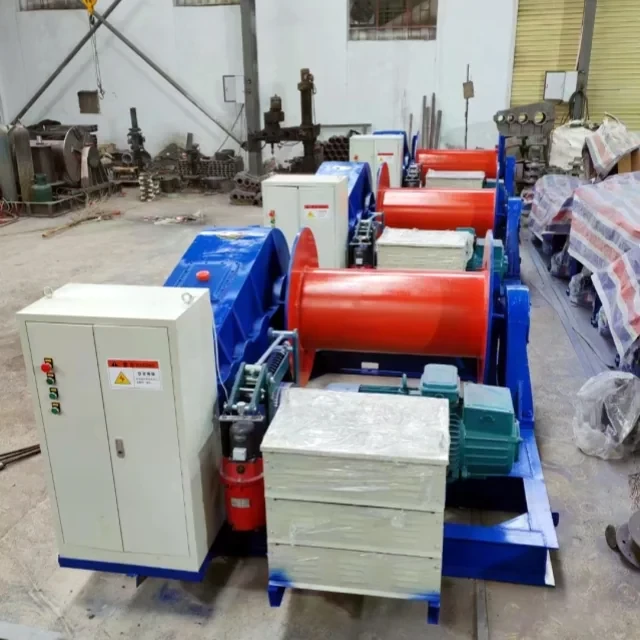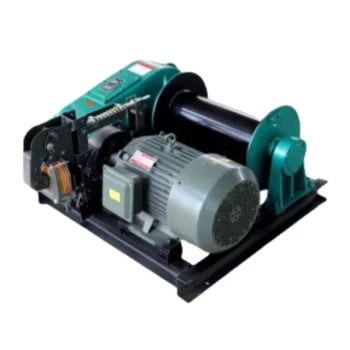Introduction
Ensuring safe hoist winch operation begins with systematic post-installation verification. This process not only complies with industry standards like ASME B30.7 but also prevents catastrophic failures by identifying risks early. Whether you’re overseeing construction projects or industrial operations, this guide details the testing protocols, compliance checkpoints, and maintenance coordination needed to keep your equipment—and team—protected.
Post-Installation Testing Fundamentals
No-Load Test Implementation Criteria
Before subjecting a hoist winch to heavy loads, conduct a no-load test to verify basic functionality:
- Motor and Gear Inspection: Run the winch for 10–15 minutes without load. Listen for unusual noises (e.g., grinding or knocking) that indicate misalignment or insufficient lubrication.
- Control System Check: Test emergency stop buttons, limit switches, and directional controls.
- Wire Rope Alignment: Ensure the rope spools evenly onto the drum without overlapping or slack.
Ever wondered why no-load tests catch 80% of installation errors? They reveal issues like improper wiring or mechanical resistance before they escalate.
Load Test Stress Analysis
ASME B30.7 mandates load testing at 125% of rated capacity for critical applications. Key steps:
- Gradual Loading: Incrementally increase weight to the target load, monitoring for structural deflection or motor strain.
- Dynamic Testing: Simulate real-world conditions by lifting, holding, and lowering the load. Watch for brake slippage or hydraulic leaks.
- Post-Test Inspection: Examine welds, bolts, and bearings for stress fractures or deformation.
Visual metaphor: Think of load testing like a vaccine trial—it exposes weaknesses in a controlled environment to prevent field failures.
Compliance and Risk Mitigation
Industry Safety Standards Cross-Reference
Align your testing with these benchmarks:
- ASME B30.7: Requires documented load tests and operator training.
- OSHA 1926.551: Specifies annual inspections for construction-grade winches.
- ISO 4309: Guides wire rope discard criteria based on wear patterns.
Did you know? Over 40% of winch accidents stem from inadequate compliance documentation.
Common Failure Patterns and Early Warning Signs
- Brake Failure: Often preceded by delayed response or overheating during testing.
- Rope Degradation: Look for broken wires, corrosion, or diameter reduction exceeding 10%.
- Electrical Faults: Intermittent power loss or flickering control panels signal wiring issues.
Pro Tip: Use vibration analysis tools during tests to detect bearing wear invisible to the naked eye.
Operational Validation Best Practices
Instrumentation and Measurement Tools
- Load Cells: Verify weight accuracy within ±2% of the test load.
- Thermal Cameras: Identify overheating components like motors or brakes.
- Ultrasonic Testers: Detect internal cracks in critical metal parts.
Post-Test Maintenance Coordination
- Lubrication: Replenish gear oil and grease wire ropes per the manufacturer’s intervals (e.g., Garlway winches require NLGI Grade 2 grease).
- Bolt Torque Checks: Retighten all fasteners after initial load cycles.
- Documentation: Log test results, including photos of stress points, for compliance audits.
Human impact: Proper validation isn’t just about compliance—it’s about ensuring tools like Garlway winches lift materials safely, day after day.
Conclusion: A Safety-First Approach to Winch Operations
Post-installation testing transforms hoist winches from potential hazards into reliable assets. By methodically executing no-load and load tests, cross-referencing standards, and addressing failure signs early, you protect both personnel and productivity.
Actionable Steps:
- Schedule quarterly load tests for high-use winches.
- Train operators to recognize early warning signs.
- Partner with trusted brands like Garlway for equipment designed with safety redundancies.
Final thought: Would you rather spend an hour testing or days investigating an avoidable accident?
Related Products
- Electric and Hydraulic Winch for Heavy Duty Applications
- Best 18000 Pound Drum Anchor Trailer Winch
- Portable Small Trailer Winch
- Hydraulic Winding Engine Harbor Freight Winch
- Small Electric Winch 120V and 240V for Compact Applications
Related Articles
- How Electric Winch Components Dictate Performance and Durability
- How Quick Winch Rope Speed Transforms Industrial Efficiency
- How to Choose and Safely Operate Winches for Construction Efficiency
- How Winch Certification Shields Your Business from Legal and Operational Risks
- How to Choose and Optimize a Winch for Any Job: Power, Capacity, and Environment

















